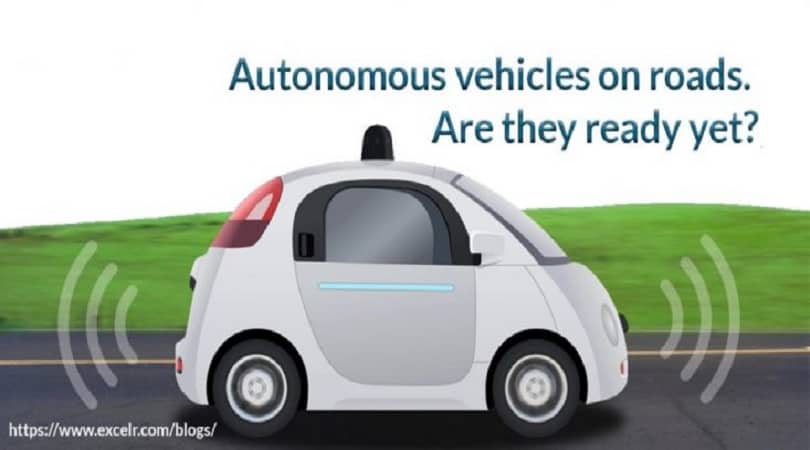Autonomous vehicles (AV) are not just another new innovation. They are an innovation that is steadily developing into an intensely social space. It is, therefore, nothing surprising that an extensive variety of factors impact people in public levels of receptiveness towards Autonomous vehicles and that drivers have solid sentiments about how AVs should act on the road.
Autonomous Vehicles On Roads. Are They Ready Yet?
Autonomous vehicles may possibly change the substance of transport, the experience of our day by day drive, and at last, make our streets more secure spots. In any case, our review finds that the major share of respondents stay worried at the prospect of Autonomous vehicles, regardless of whether over a quarter of respondents are available to the entry of Autonomous vehicles on our roads. While considering current levels of knowledge and experience of Autonomous Vehicle innovation, it is to be trusted that more prominent harmony will relieve a portion of the worry.
In any case, this exploration recognizes a various profound set of reservations – to the readiness to give up control, to the unwavering quality of Autonomous vehicle innovation and to AVs’ capacity to incorporate in the “social space” that is the road. It is important to comprehend these reservations, as opposed to simply accept that general public needs more info if AVs are to exchange a place for themselves on the road.
Debates that emphasis just on advancing more prominent safety measures, a way of life improvements or financial efficiencies won’t pick up traction if AVs don’t fit easily into a general public picture of what the road ought to resemble for them to drive on.
Connected Autonomous Vehicles (CAVs) are no longer part of an envisioned future; they are being tried on roads today. But, anticipating a precise timeline for when our vehicles will be completely connected and self-ruling is a real challenge.
That has less to do with understanding the vehicle innovation than surveying the unpredictable web of policies and procedures – from creating traffic signals that speak with vehicles to insurance policies which bolster this new reality – that must be pondered, decided and executed. Our exploration looks beyond technology to comprehend what must occur before fully autonomous vehicles turn into a reality.
Autonomous vehicles are functioned by a series of technologies which includes cameras, LIDAR scanners, GPS innovation, ultrasonic sensors, millimeter-wave radars, vehicle-to-vehicle and vehicle-to-framework network, and exclusive algorithms. These work together consistently to perform the whole dynamic driving task in all circumstances and situations throughout the whole excursion.
The potential effect of autonomous vehicles is absolutely progressive. Wide-scale acceptance will prompt exceptional social, economic, and ecological change. For general society, the autonomy and opportunity of individual travel will be accessible to nearly everybody – youth, seniors and the physically, rationally and outwardly weakened. The normal diminishment of road clog would bring enormous work and individual advantages. The additions from drop-in vehicle accidents and deaths are self-evident.
The boundless business acknowledgment of AVs in the quick future is delayed by technical requirements, administrative caginess, infrastructure obstructions, impulsive customer acknowledgment and cost of advancement. Therefore, the production of AVs will require a full makeover of automotive tasks and their environment support.
Here are Pros and Cons involved in Autonomous Vehicles.
| Pros | Cons | |
|---|---|---|
| Traffic Safety Increases | Things Can Get Inferior | |
| Well-organized Transportation | More Vehicles, Congestion, Wear and Tear | |
| More Space for Housing, Retail or Public Areas | More Urban Stretch | |
| Economical Transportation | Connected Infrastructure Price and Anti-Robot Criticism | |
There’s a lot of guarantee and opportunity associated with autonomous cars, however, there is a considerable measure of inquiries and concerns. The technology is yet being established and verified, so workarounds for a portion of the previously mentioned issues may be created as of yet, yet the framework isn’t impeccable at present.
Autonomous vehicles might be a part of the future; however, they are effectively conveyed over roadways, and it will be uprising not just for drivers and traffic signals, also for the transportation industry as a whole.











